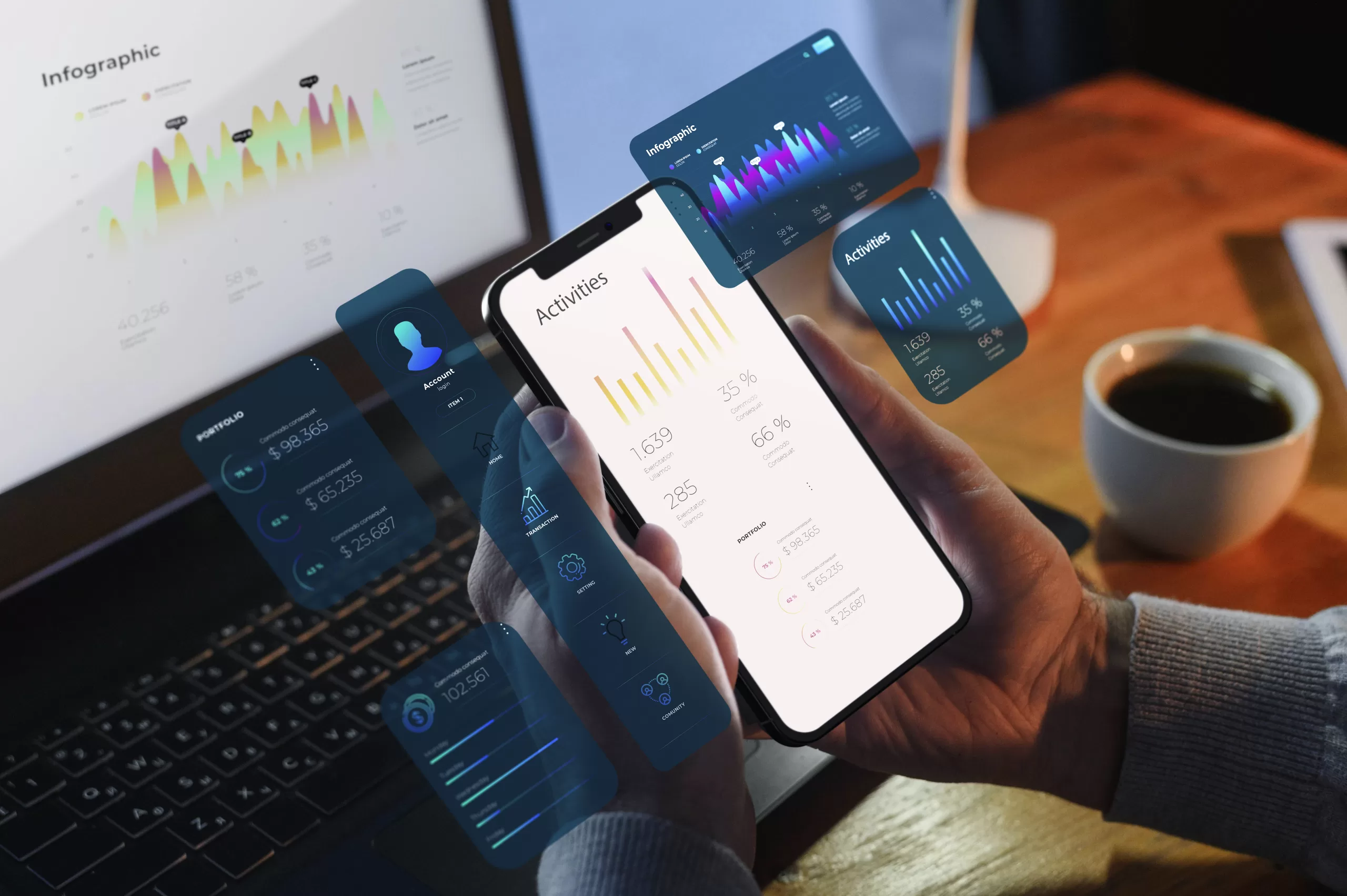“The best way to predict the future is to develop it.” This quote comes from Alan Kay, a computer scientist who was among the first to envision the concept of a personal computer with a graphical user interface.
The story of development begins back in 1991, with the launch of the first website and web browser, a milestone that marked the start of the public web. At the time, web development was the only topic on the table. Mobile development only emerged years later, in 2007, with the release of the iPhone. Steve Jobs’ invention revolutionized the smartphone market by introducing an intuitive interface and internet access.
Fast-forward to the present: in 2024, it’s estimated that over 1.9 billion websites are live on the internet, according to the Global Overview Report (2024). Despite that, the majority of global web traffic today comes from mobile devices, accounting for roughly 60% of total access.
This behavioral shift gave rise to practices like Mobile First, a design approach that prioritizes building websites and applications for mobile devices before adapting them to larger screens like desktops and tablets.
But even though web and mobile development are both central to our digital lives, do you know what really sets them apart? That’s exactly why we at NextAge created this article, to clarify the differences and break down the main elements of each approach.
What is Web Development?
Web development is all about creating websites and web applications that can be accessed through a web browser. It includes everything from structuring content to programming functionality, and covers aspects like design, performance, and security. It can be divided into three core areas:
- Front-end: Front-end developers handle the interface that users see and interact with.. They use technologies such as HTML (content structure), CSS (visual styling), and JavaScript (interactivity), often alongside frameworks like React, Angular, and Vue.js.
- Back-end: Back-end professionals manage business logic, database handling, and seamless integration with the front end. Languages used here include Node.js, PHP, Python, Java, and more. For databases, developers commonly rely on MySQL, PostgreSQL, and MongoDB.
- Full-stack: Full Stack developers are skilled in both front-end and back-end technologies, offering end-to-end solutions.
Web development is constantly evolving, with new frameworks and technologies emerging year after year. That’s why professionals in this field must stay up to date and ready to adapt to the latest market demands.
Above all, this is a highly versatile area, allowing the creation of anything from simple static pages to fully dynamic, interactive experiences.

What is Mobile Development?
Mobile development focuses on building mobile applications for devices like smartphones and tablets. These apps are designed to run on platforms such as Android and iOS, and can be developed in several ways:
- Native development: Apps are built specifically for each operating system. Common technologies include Java and Kotlin for Android, and Swift or Objective-C for iOS.
- Hybrid development: A single codebase is used to deploy apps for both Android and iOS, using technologies like React Native, Flutter, and others.
- Progressive Web Apps (PWAs): These are web apps adapted for mobile, but they behave like native apps. They can be installed via browser and work offline.
Mobile development also lets developers take full advantage of device-specific features like sensors, cameras, GPS, and push notifications. Just like in web development, interface design plays a major role in the user experience. According to Applause (2017), 88% of users abandon apps that are buggy or unstable.

What’s the Role of User Experience (UX)?
As we’ve seen, regardless of the development type, user experience (UX) is a critical factor. UX goes beyond visual design, it’s about understanding user needs, behaviors, and expectations. These insights are refined through research, usability testing, and iteration.
In web development, UX ensures that websites and applications are easy to use, intuitive, and visually engaging. This includes applying principles of responsive design, accessibility, and usability.
In mobile development, UX is even more crucial. Apps must be optimized for smaller screens, touch inputs, and mobile-specific interactions. Mobile developers must consider navigation, layout, performance, and integration with native device features.
NextAge: Web & Mobile Development through Staff Augmentation or Software Management System

Whatever kind of development your company needs, NextAge has you covered! Through our Staff Augmentation model, we provide dedicated squads tailored to your goals, whether you need developers, scrum masters, tech leads, analysts, QAs, or UX/UI designers.
Already have a clear development goal in mind? We also offer scope-based solutions, focusing on detailed planning to understand exactly where you want to go.
As Alan Kay said at the start of this article: develop your future. And you can do that with us. At NextAge, we’re driven to create value through technology, both in web and mobile development.






